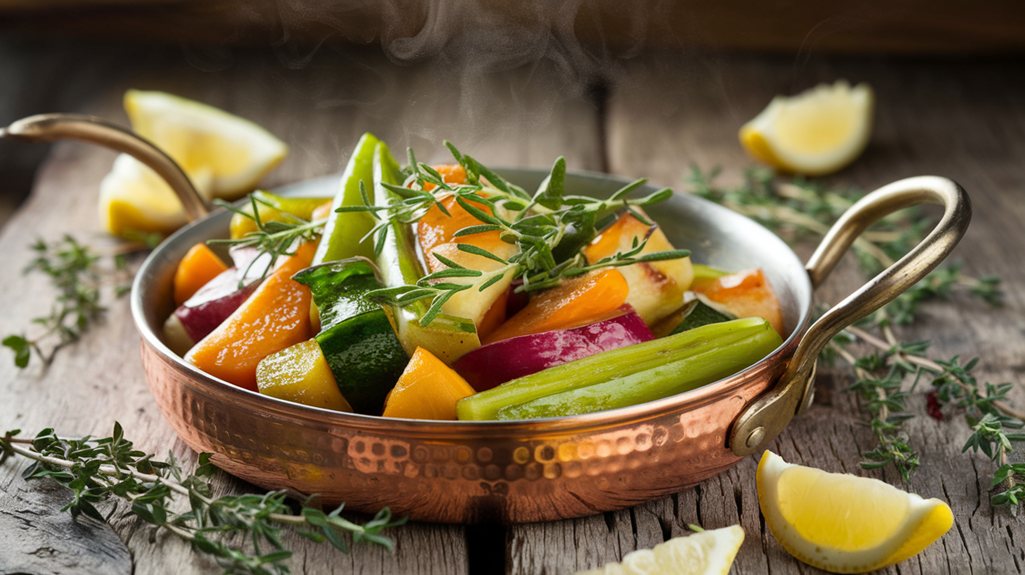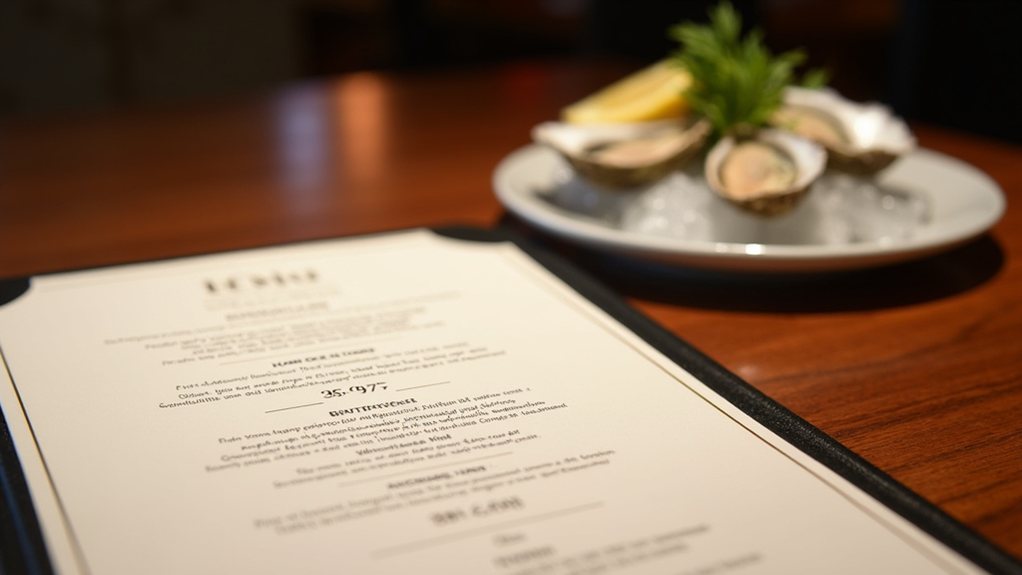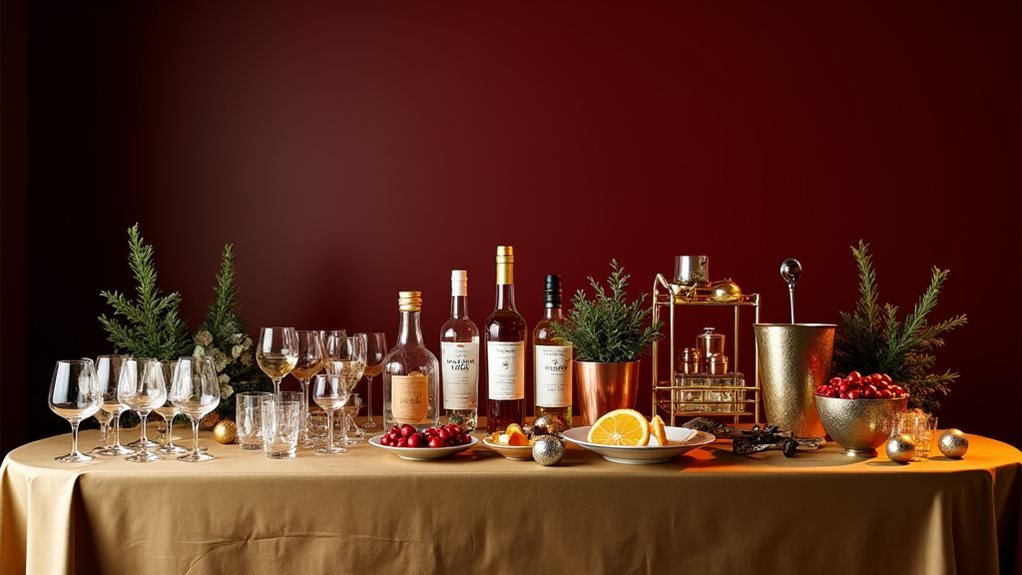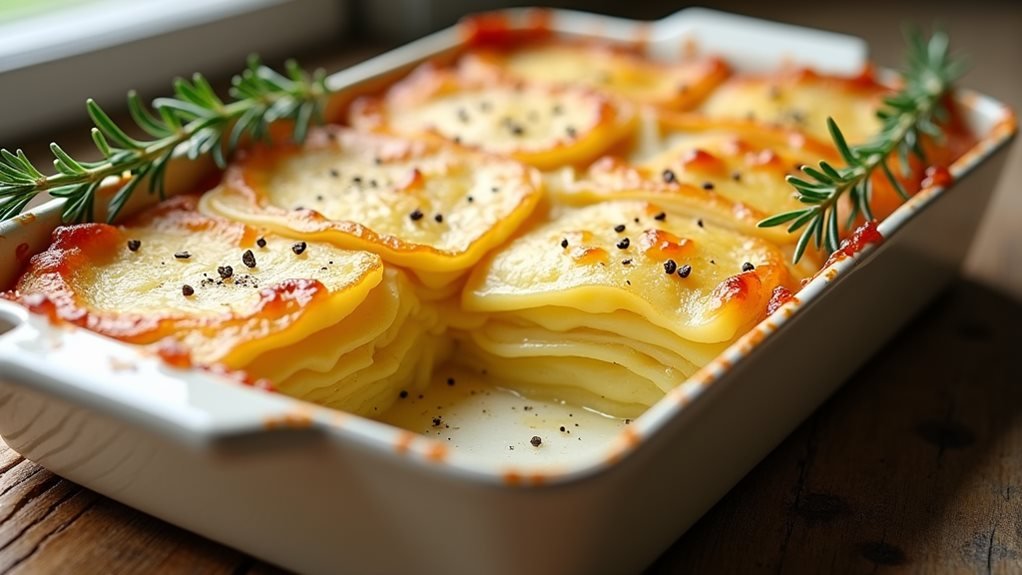You'll find Gordon Ramsay's approach to seasonal cooking both practical and inspiring as you investigate his take on classic dishes. His recipes showcase the best ingredients each season has to offer, from spring's tender asparagus to winter's hearty root vegetables. Whether you're an experienced cook or just starting out, these five dishes will transform your understanding of how to match cooking techniques with nature's calendar. Let's start with his signature springtime risotto…
Spring's Zesty Lemon and Asparagus Risotto
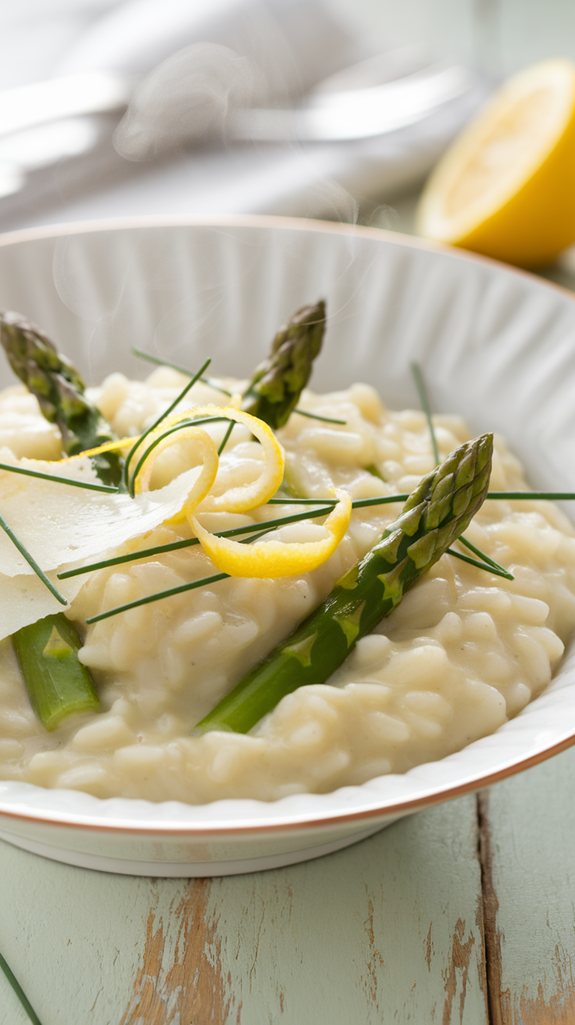
Spring's fresh asparagus and vibrant lemon create a perfect harmony in this luxurious risotto, capturing the essence of the season in every creamy bite. The tender asparagus spears, harvested at their peak, bring a subtle earthiness that complements the bright citrus notes and rich, velvety texture of the perfectly cooked Arborio rice.
This restaurant-worthy dish showcases Gordon Ramsay's dedication to seasonal ingredients while maintaining the traditional Italian cooking technique that makes risotto special. The result is a refined yet comforting meal that balances sophisticated flavors with straightforward preparation. The high starch content of Arborio rice is essential for achieving the signature creamy consistency that defines a perfect risotto. Following Gordon Ramsay's technique, constant stirring ensures the rice releases its starches properly for the perfect texture. Just like his Italian Tipo 00 flour creates delicate textures in pasta, the choice of rice variety is crucial for risotto's success.
- 2 cups Arborio rice
- 1 pound fresh asparagus, trimmed and cut into 2-inch pieces
- 6 cups vegetable stock
- 1 medium onion, finely diced
- 4 cloves garlic, minced
- 1 cup dry white wine
- 2 lemons (zest and juice)
- 4 tablespoons butter
- 1/2 cup freshly grated Parmesan cheese
- 2 tablespoons olive oil
- Salt and white pepper to taste
- Fresh herbs (chives or parsley) for garnish
Heat stock in a separate pan and keep warm throughout cooking. In a large saucepan, sauté onions in olive oil until translucent, add garlic and rice, cooking until rice becomes slightly toasted.
Add wine and let it reduce, then begin adding hot stock one ladle at a time, stirring constantly. When rice is halfway done, add asparagus pieces. Continue adding stock until rice is al dente.
Finish by stirring in butter, Parmesan, lemon zest, and juice. Season with salt and white pepper, and garnish with fresh herbs.
For the best results, avoid washing the rice before cooking as this removes necessary starch. The risotto should maintain a fluid consistency – when you draw a line through it with a spoon, it should slowly flow back to fill the space.
Test the asparagus and rice frequently near the end of cooking to confirm both are cooked to perfection without becoming mushy. Always serve immediately while the risotto is at its creamiest.
Summer's Grilled Mediterranean Sea Bass
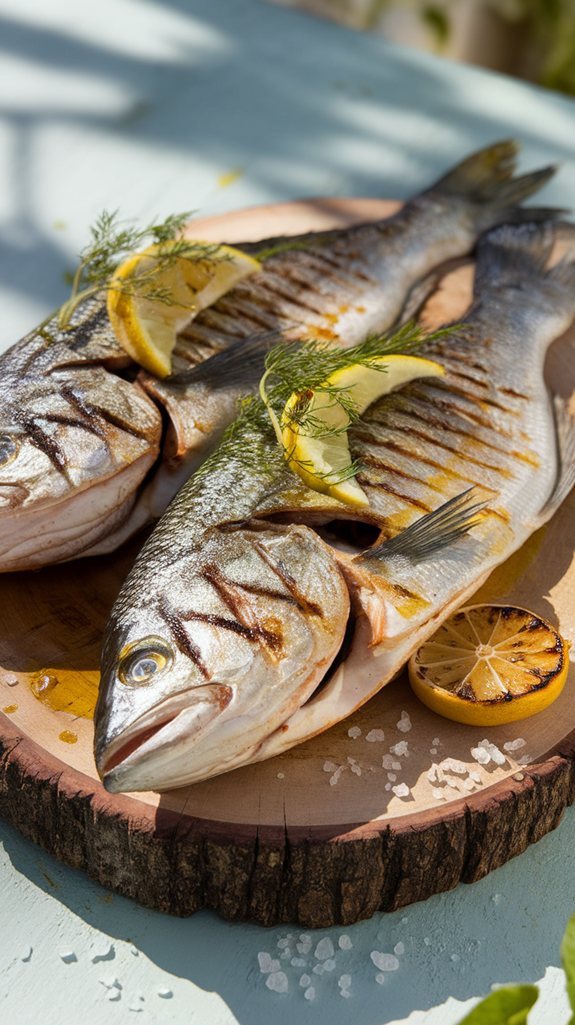
Mediterranean sea bass, also known as branzino, is a prized fish that perfectly captures the essence of summer coastal dining. Its delicate, white flesh and mild flavor make it an ideal candidate for grilling, where it can absorb the wonderful smoky notes while maintaining its natural sweetness.
When prepared with classic Mediterranean ingredients like fresh herbs, citrus, and olive oil, grilled sea bass transforms into an elegant yet simple dish that's perfect for outdoor entertaining. The fish's firm texture holds up well on the grill, and its skin crisps beautifully while the flesh remains moist and tender. Similar to preparing crispy skin salmon, the key is achieving the perfect sear on the skin.
For those seeking variety, this dish pairs wonderfully with pan seared scallops served alongside an apple butter puree.
- 2 whole sea bass (about 1 pound each), cleaned and scaled
- 4 tablespoons olive oil
- 2 lemons, sliced
- 6 sprigs fresh thyme
- 4 sprigs fresh rosemary
- 4 cloves garlic, thinly sliced
- 1 teaspoon sea salt
- 1/2 teaspoon black pepper
- 1 bunch fresh parsley
- 2 tablespoons fennel fronds
Pat the fish dry and score the skin diagonally on both sides. Brush with olive oil and season inside and out with salt and pepper. Stuff the cavity with lemon slices, herbs, and garlic.
Preheat the grill to medium-high heat and oil the grates well. Grill the fish for 5-7 minutes per side until the skin is crispy and the flesh is opaque and flakes easily with a fork. Let rest for 5 minutes before serving.
For best results, verify your grill is properly preheated and clean before cooking. The fish should be at room temperature before grilling to guarantee even cooking.
If the fish sticks to the grill, resist the urge to flip it immediately; it will release naturally when properly seared. Keep a spray bottle of water handy to manage any flare-ups that might occur from dripping oil.
Autumn's Roasted Butternut Squash Wellington
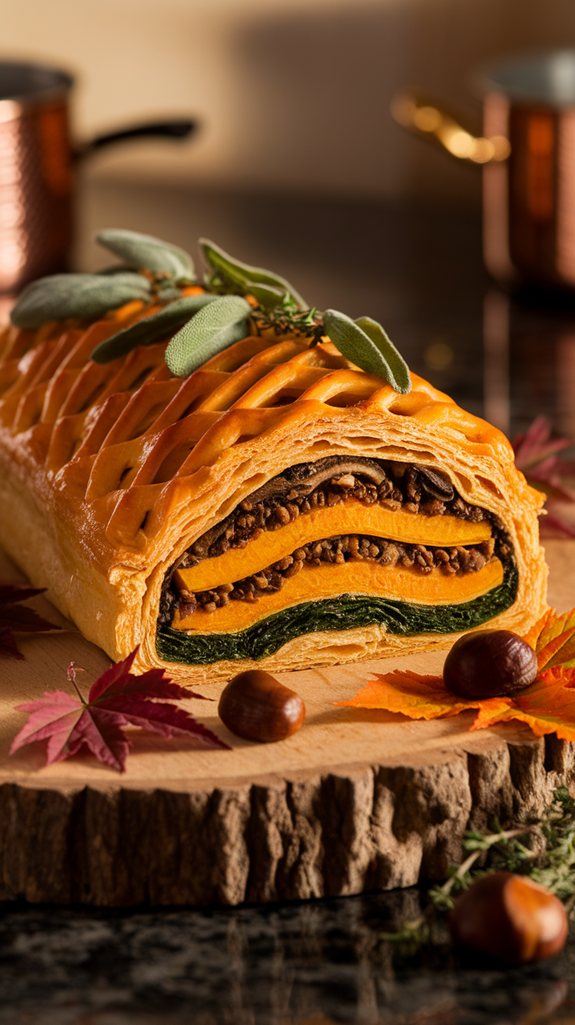
A stunning vegetarian centerpiece that mirrors the vibrant colors of autumn, the Butternut Squash Wellington combines earthy flavors with delicate pastry. The sweetness of roasted butternut squash pairs beautifully with wild mushrooms, chestnuts, and fresh herbs, all wrapped in golden, flaky puff pastry.
This impressive dish takes inspiration from the classic Beef Wellington but transforms it into a seasonal vegetarian masterpiece. The key to success lies in properly preparing the butternut squash and making certain the mushroom duxelles is cooked until dry to prevent a soggy bottom in the pastry.
- 1 large butternut squash, peeled and cut into 2-inch chunks
- 2 sheets puff pastry, thawed
- 500g mixed wild mushrooms, finely chopped
- 200g cooked chestnuts, roughly chopped
- 4 shallots, finely diced
- 4 cloves garlic, minced
- 2 tablespoons fresh thyme leaves
- 2 tablespoons fresh sage, chopped
- 100g spinach leaves
- 2 eggs, beaten (for egg wash)
- Olive oil
- Salt and black pepper
- 2 tablespoons Dijon mustard
Preheat oven to 400°F (200°C). Toss butternut squash with olive oil, salt, and pepper, then roast for 25-30 minutes until tender.
Meanwhile, sauté mushrooms, shallots, and garlic until moisture evaporates, then add herbs and chestnuts. Cool both mixtures completely.
Layer puff pastry with mushroom mixture, roasted squash, and spinach. Roll and seal with egg wash, score the top, and bake for 40-45 minutes until golden brown.
For best results, make certain all components are completely cool before assembly to prevent the pastry from becoming soggy. The Wellington can be assembled several hours in advance and kept refrigerated until ready to bake.
Always allow the puff pastry to thaw completely before working with it, and verify to rest the finished Wellington for 10-15 minutes before slicing to maintain its shape.
Winter's Braised Short Ribs With Root Vegetables
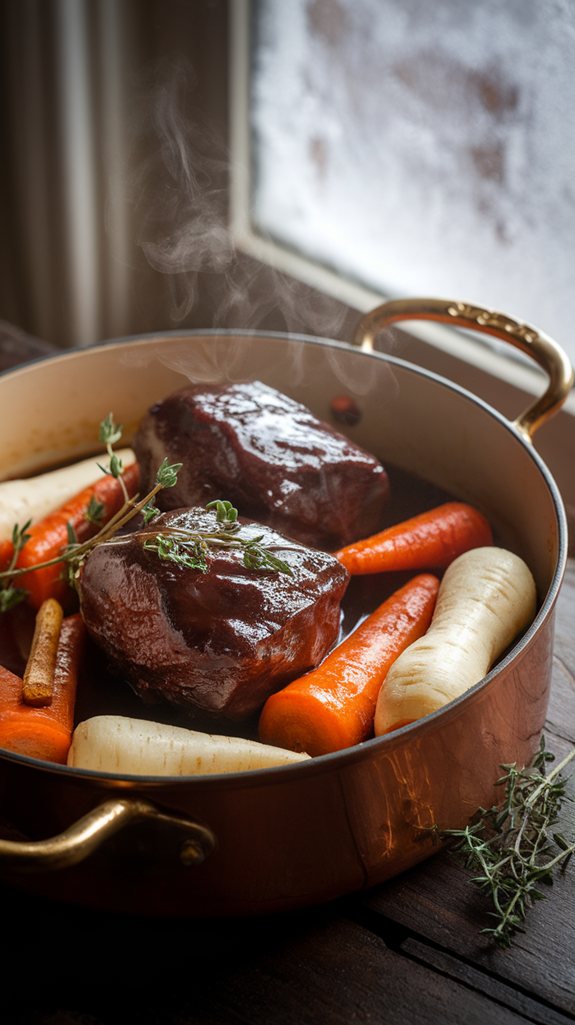
Braised short ribs are the quintessential winter comfort food, combining rich, tender meat with hearty root vegetables in a warming red wine sauce. This classic dish transforms tough cuts of beef into succulent, fall-off-the-bone meat through slow cooking, while the vegetables absorb the savory flavors of the braising liquid.
Gordon Ramsay's version enhances this rustic dish with careful attention to browning the meat and selecting the perfect combination of winter vegetables. The result is a deeply satisfying meal that fills the home with enticing aromas and delivers restaurant-quality results, perfect for special occasions or a luxurious Sunday dinner.
- 4 lbs beef short ribs
- 2 large carrots, roughly chopped
- 3 parsnips, roughly chopped
- 2 onions, diced
- 4 celery stalks, chopped
- 6 garlic cloves, crushed
- 2 cups red wine
- 4 cups beef stock
- 2 bay leaves
- 4 sprigs fresh thyme
- 2 tablespoons tomato paste
- 2 tablespoons olive oil
- Salt and black pepper
- 2 tablespoons flour
Season the short ribs generously with salt and pepper, then dust with flour. Heat olive oil in a large Dutch oven over high heat and brown the ribs on all sides until deeply caramelized. Remove the meat and reduce heat to medium.
Add vegetables and cook until softened, then stir in tomato paste and cook for 2 minutes. Add wine, scraping the bottom of the pot, and reduce by half. Return the meat to the pot, add stock and herbs, bring to a simmer, cover, and cook in a 325°F oven for 2.5-3 hours until meat is tender.
For best results, prepare this dish a day ahead and refrigerate overnight, which allows the flavors to develop fully and makes it easier to remove excess fat that solidifies on top.
If the sauce is too thin after cooking, remove the meat and vegetables, then reduce the liquid over high heat until it reaches the desired consistency. Always choose bone-in short ribs for maximum flavor and verify they're well-marbled for the most tender result.
Essential Seasonal Cooking Tips From Chef Ramsay
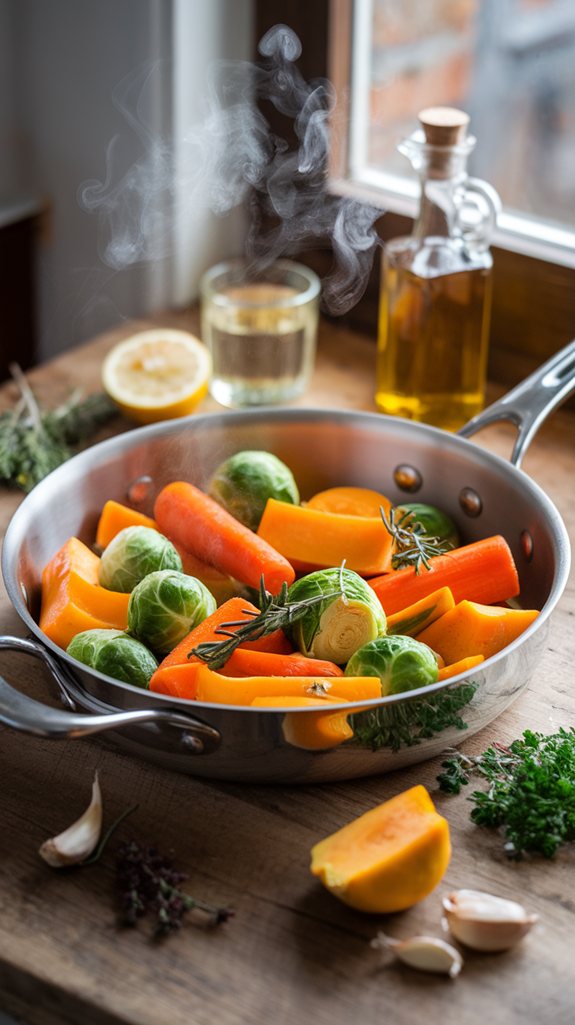
Crucial seasonal cooking is about understanding how to adapt basic techniques to whatever ingredients are at their peak. This versatile approach allows you to create extraordinary dishes from ordinary seasonal produce while maintaining the core principles of proper seasoning, temperature control, and timing.
The key to mastering seasonal cooking lies in recognizing the natural flavors of fresh ingredients and knowing how to improve them through proper preparation methods. Whether dealing with spring vegetables, summer fruits, autumn squashes, or winter root vegetables, the techniques remain consistent while the ingredients change.
- High-quality olive oil
- Sea salt
- Black peppercorns
- Fresh herbs (thyme, rosemary, sage)
- Garlic cloves
- Butter
- Seasonal vegetables
- Lemon
- Stock (vegetable or chicken)
- White wine
Start by heating olive oil in a large pan over medium heat. Add crushed garlic and fresh herbs, allowing them to infuse the oil for 1-2 minutes.
Add your chosen seasonal vegetables, cut uniformly for even cooking. Season with salt and pepper, then add a splash of white wine and stock. Reduce heat, cover, and simmer until vegetables are tender but maintain their texture. Finish with a knob of butter and a squeeze of lemon juice, adjusting seasoning to taste.
When cooking seasonal ingredients, always consider their water content and natural sugars. Root vegetables typically require longer cooking times, while tender spring vegetables need minimal heat exposure.
Always taste your ingredients raw initially to understand their natural flavors and adjust cooking times accordingly. Keep a close eye on color – bright, vibrant hues indicate ideal cooking, while dull colors suggest overcooking.
Happy Cooking
Like a culinary conductor guiding an orchestra through four distinct movements, you'll find that mastering these seasonal recipes brings harmony to your kitchen year-round. You're now equipped with Ramsay's techniques for transforming fresh ingredients into memorable dishes. Whether you're perfecting spring's bright risotto or winter's comforting short ribs, you'll create meals that honor each season's unique flavors and textures with professional precision.
